71 F. high on Tuesday at KMSP.
74 F. record high on November 3 in the Twin Cities (2008 and 1978).
-3 F. low temperature on this date in 1991.
49 F. average high on November 3.
55 F. high on November 3, 2014.
November 4, 1982: 20 inches of snow falls in the Kabatogema area.
November 4, 1901:
With a high temperature of only 22 and a low of 15, 175 boxcars of
potatoes were in peril at the Minneapolis rail yard. Workers scrambled
to move the rail cars full of tubers in roundhouses and transfer
potatoes to refrigerated cars. Individual stoves had to be purchased on
the spot for 59 remaining cars. Thankfully, most of the spuds were
saved.
November 4, 1853: Cold snap begins at Ft. Snelling. The next four days would be 16 degrees or lower.
November 4, 1727:
The first outdoor celebration at the chapel of Fort Beauharnois on Lake
Pepin was postponed due to "variableness of the weather."
6 Month Boating Season - in Minnesota?70F Again Today, Then Cooling Off
"Haven't seen this before." 24 years ago today we were still digging out from 2-3 feet of snow. On
November 4, 1991 the Twin Cities woke up to -3F. The "high" that day was a refreshing 17F. Today will be 55 degrees warmer.
I'm
black and blue from pinching myself, watching a flotilla of boats on
the lake. I don't remember boating in November, in Minnesota. That's a
new one.
Uh oh, here it comes. Paul is about
to blubber on about global warming. Not today. This is weather, not
climate. But if the experts are right (and I suspect there is now ample
evidence) we'll continue to see more warmer than average days going
forward.
After flirting with 70F again today showers arrive on Thursday. By Friday it will feel like November with highs stuck in the 40s; scrappy stratocumulus clouds racing by.
50s
return next week (above average) and weather models show prevailing
winds howling from the southwest into the 3rd week of November. Our mild
bias continues. Thank - or blame - El Nino.
At some point it will snow, eventually we'll see a rush of polar air. Our super-sized autumn limps on.
Minor Reality Check Brewing.
No, it can't stay in the 70s indefinitely, not with a sun angle as high
in the sky as it was the first week of February. At some point gravity
kicks in - and Canadian air pushes south, in waves. One such (minor)
push of chilly air arrives by Friday; 7 AM wind chills in the low 30s.
Source: Aeris Enterprise.
Thursday Rain - Bigger Rain Event Brewing Next Week?
A coule models print out nearly 2" of rain a week from today. Let's see
if there's any continuity to the forecast of a significant storm; odds
favor enough warm air nearby for (mostly) rain.
10-Day Rainfall Forecast.
Here is GFS guidance, showing showery rains Thursday; a better chance
of a more significant storm - probably rain - spinning up by the middle
of next week from the Upper Midwest to the Great Lakes. Source:
AerisWeather.
Whispers of El Nino?
Attribution is difficult, but a major El Nino event usually pulls the
core of the jet stream south, favoring troughs of low pressure over the
western USA, a southwesterly wind flow downwind favoring milder weather
east of the Rockies. The 500 mb forecast (GF) valid Tuesday evening,
November 17, suggests a series of storms for the Pacific Northwest and
northern California with a mild bias predicted over the central USA.
November? More Like September as Warm Weather Toasts Eastern U.S. Yes, we know something about unusual warmth these days - here's an excerpt from
WXshift: "
Forget
enjoying a pumpkin spice latte if you live in the eastern half of the
U.S. Cold brew weather is coming back to the region to start November,
including record warmth in Florida to kick off the week. A strong
ridge of high pressure is building in eastern Canada and will
effectively block colder air from coming into the region. That will allow near-record warmth to bake most locations
east of the Mississippi with temperatures more like September than
November. Highs will be 10-15°F above normal from Chicago to New York,
reaching into the 70s this week. The warmest location compared to normal
goes to Iowa on Monday. Temperatures are also in the 70s there and in some locations, that’s more than 20°F above normal..."
Map credit above: "
Temperatures anomalies forecast for North America this Wednesday." Credit:
University of Maine.
Chapala to Make Landfall in Yemen as First Hurricane-Strength Cyclone on Record. More details in an update from
The Capital Weather Gang: "...
Cyclones
themselves are not uncommon in the Arabian Sea — on average a few weak
to moderately strong storms spin up each year. However, cyclone
landfalls in this region are rare. Chapala will be the first known
hurricane-strength storm to make landfall in Yemen since modern records
began there in the 1940s. And if Chapala maintains hurricane strength
at landfall, it would only be the third hurricane on record to make
landfall on the entire Arabian Peninsula..."
Inside the Core of "Patricia"; the Strongest Recorded Hurricane to Strike Mexico's West Coast. The (amazing) video and story is at
Capital Weather Gang; here's an excerpt: "...
What’s
it like to withstand the brunt of a ferocious and historic Category 5
hurricane? Josh Morgerman, an extreme storm chaser from Los Angeles,
intentionally positioned himself to intercept the landfall of Patricia,
which just hours prior attained the greatest intensity of any hurricane
ever measured by the National Hurricane Center. His footage of the storm
making landfall, complemented by his compelling first person narrative,
is absolutely riveting..."

Study: Flood Models Need to Include Cities' Impact on Rainfall.
You've heard of the urban heat island keeping surface temperatures
warmer, especially at night? It turns out metropolitan areas also impact
rainfall and flood potential. Here's an excerpt from
Purdue University: "
Current
flood models do not account for cities' impact on local rainfall
patterns, an oversight that could lead to significantly underestimating
the severity and frequency of floods in urban areas, a Purdue study
finds. Dev Niyogi,
Indiana's state climatologist, and collaborators at China's Tsinghua
University showed that hard, impenetrable city surfaces such as concrete
can dramatically influence the way rainfall spreads across a watershed.
Flood models that do not incorporate the ways cities modify rainfall
patterns could underestimate the magnitude of future floods by as much
as 50 percent, said Niyogi, who is also a professor of agronomy and earth, atmospheric and planetary sciences.
"Over the last two decades, we've seen an increase in major flooding in
urban areas," he said. "Many factors are contributing to that change,
including extreme weather, climate change and climate variability. But
evidence is also emerging that cities themselves are significantly and
detectably changing the rainfall patterns around them..." (File: USGS).

Debunking 5 Myths About Meteorologists. Dr. Marshall Shepherd has a good post at
Forbes; here's a clip: "...
With that working definition let’s debunk some myths.
1. Most meteorologists are NOT on TV:
Like engineering or teaching, there are different types of
meteorologists. Of the 14,000 or so members of AMS, less than 10% of
them are in the television world, according to Executive Director, Dr.
Keith Seitter. TV colleagues are the most accessible and obvious window
to the public but only a fraction of the meteorology and atmospheric
sciences community. For career options in meteorology, this website is a good start..."
IBM Is About To Change The Way We Forecast the Weather.
Will "Watson" put flesh and blood meteorologists out of work? Stay
tuned. Disruption, however necessary and inevitable, is never an easy
process. Here's an excerpt from
Huffington Post: "...
Translated:
IBM will tap into a huge network of weather data, digest it and provide
information to commercial clients. As for how that might affect you, a
spokesman for IBM explained to The Huffington Post that insurance
companies, for example, will be able to know more about incoming storms
and pass that information along to customers. Airlines will be able to
better understand weather conditions and, in theory, avoid delays while
wasting less fuel. In other words, there's a lot of potential here..."
File photo credit: The Washington Post by Andrew Spear.
Grids That Are Smart Enough To Weather Tomorrow's Storms. Here's a clip from an interesting story at
phys.org: "...
Blackouts
like those could become more common. Climate change will increase not
just the number of storms like Hurricane Sandy in the USA, but floods,
wildfires, heat waves and droughts. The U.S. Department of Energy
reinforced that expectation most recently in an October 2015 report. The
country's power supply - with more than 9,200 power plants and nearly
half a million kilometers of overhead lines - about a third of a million
miles - is already feeling the strain today..."
Climate Change and the U.S. Energy Sector: Regional Vulnerabilities and Resilience Solutions. The report referenced in the story above is available in PDF form
here.
New York Prepares For Up to 6 Feet of Sea Level Rise.
Interested in property near the ocean? Consider renting, not buying,
and make sure your insurance premiums are paid up. Here's an excerpt of a
post at
Climate Central: "...
New York State environment officials announced Friday that they’re creating new sea level rise
regulations that will help coastal communities build more resilient
homes and other buildings that will be better able to withstand storm
surges and other flooding made worse by rising seas driven by climate
change. The new regulations will require developers in New York City,
along Long Island and on the shores of the Hudson River to prepare for
sea levels that could rise between 15 and 75 inches by 2100. At the far
end of that scale, many of the areas hit hard by Hurricane Sandy — the
Rockaway Peninsula and the shores of Staten Island, for example — could
be underwater..."
Photo credit above: "
The flooded Battery Park Tunnel in New York City following Hurricane Sandy in October 2012." Credit: Timothy Krause/flickr
These 13 States Saw Carbon Pollution Go Up Over a Decade.
CO2 emissions have gone down in Minnesota and Wisconsin, but that's not
the case in North Dakota and Nebraska. Here's an excerpt from a story
at
National Geographic: "
While
levels of the heat-trapping greenhouse gas went down in 37 states and
the District of Columbia between 2000 and 2013, they actually increased
in 13 states, according to figures recently released by the Energy Information Administration.
Nebraska saw the biggest rise: Carbon emissions jumped 28 percent,
mostly because of higher coal use for electricity and industry. Maine,
which gets three fifths of its power from renewable sources such as
hydropower and biomass, saw the biggest drop: 27 percent..."
Map credit above: NG STAFF. SOURCE: UNITED STATES ENERGY INFORMATION ADMINISTRATION
Blackouts
like those could become more common. Climate change will increase not
just the number of storms like Hurricane Sandy in the USA, but floods,
wildfires, heat waves and droughts. The U.S. Department of Energy
reinforced that expectation most recently in an October 2015 report. The
country's power supply – with more than 9,200 power plants and nearly
half a million kilometers of overhead lines – about a third of a million
miles – is already feeling the strain today.
Power plants in the
dry U.S. Southwest must often cut back generation because there is not
enough cooling water. Since 2011, California has been going through the
worst drought since meteorological measurements began.
Read more at:
http://phys.org/news/2015-11-grids-smart-weather-tomorrow-storms.html#jCp
Rare Cyclone's Rainfall a Concern for Yemen. The Washington Post reports - here's a link and story excerpt: "...
Needless
to say, this is a region with little or no experience with hurricanes.
As Bob Henson of Weather Underground put it Monday, speaking of possible
effects in Mukalla: It “is difficult to overstate the rarity and
gravity of this event: a hurricane-strength storm striking near a large,
ancient city, situated near mountains, with no modern experience in
dealing with tropical cyclones. Although Hurricane Patricia got much
more media attention, Chapala may end up bringing more damage and misery
by far. The ongoing civil war in Yemen can only exacerbate the
suffering of those affected and complicate relief efforts...”
Image credit above: Joint Typhoon Warning Center and
NPR.
A Flight To The Top of the Most Powerful Hurricane Ever. At least for that portion of the Pacific basin. WIRED has a fascinating tale - here's an excerpt: "...
Then,
almost overnight, Patricia strengthened to a Category 5 hurricane with
the highest sustained wind speeds ever recorded. And it was headed
straight for the west coast of Mexico. The speed of Patricia’s
intensification stunned scientists around the world, including Doyle. The deep layer of warm water in the Pacific this year fueled the storm,
and it got lucky by hitting a patch of calm and humid air. But all the
models took those factors into account, and none of them even got close
to predicting just how strong Patricia would become. Doyle didn’t know
what the models were missing, exactly, but he had a good guess as to
where to look for it: At the top of the hurricane, more than 35,000 feet
above the ocean, where storms exhale the air they suck in from below..."
Photo credit above: "
The WB-57."
NASA.
2050 Weather Forecast Brought To Your Living Room.
A preview of what a typical TV weather report might look like 35 years
from now if carbon levels aren't curtailed? Here's a glimpse from Climate Home: "Vessels
crossing an ice-free Arctic sea. Balmy temperatures fit for a music
festival in Greenland. This is a likely weather report for the polar
region within 35 years if emissions continue unabated, the USA's
prominent Weather Channel illustrated on Monday. It responded to a
WMO-sponsored series of global forecasts to roll almost daily before a
UN climate change summit starts in Paris on 30 November. Broadcasters
from Sky News Arabia to Vietnam Television will present their local
visions of a world increasingly impacted by stronger storms and volatile
rainfall..."
We're On The Cusp of a Revolution That Will Change the World As Much As Computers Did. Am I the only one who got chills after reading this at
Tech Insider? Again, what can possibly go wrong. Here's an excerpt: "...
But
one of the most exciting things — or disconcerting things, for those
scared of the power of this new technology — is that actually using the
latest tools to make genetic edits is so simple that Doudna says that
anyone who has basic molecular biology skills would be able to use
CRISPR to edit a human embryo. People with sufficient expertise could
probably set up a lab that would be able to make designer babies or transform animal species
for less than $2,000, according to experts we spoke with. We're still
waiting for a demonstration of genetic editing that will really sear it
into the world's consciousness. But for better or worse, the
world-transforming power of this technology isn't limited to the most
technologically advanced and well funded labs..." (File image:
genome-engineering.org).
Sorry Earth, This Newly Discovered Planet Is Way More Metal. By comparison Venus looks downright pleasant.
The Daily Dot has an interesting tale - here's an excerpt: "...
Considered
to be a newborn in terms of planetary age, the orphan planet is
approximately 12 million years old. It's also insanely hot: Surface
temperature is estimated to be somewhere in the neighborhood of 1,100
kelvin, or about 1,520 degrees Fahrenheit. Any clouds rolling over its
surface would probably be made out of metal, according to Dr. Beth
Biller of the University of Edinburgh. “These are likely hot silicates
and iron droplet clouds,” Biller told the New Scientist. “This makes Venus look like a nice place...”
Live Long and Die Out. The Awl takes a look at the voluntary extinction movement. I'll bet these folks are great fun at parties. Here's an excerpt: "
If
you’re prone to flights of depressive thoughts in the shower (who
isn’t?), you’ve perhaps briefly entertained the notion that, since
humans are responsible for every environmental catastrophe, maybe the
planet would be better off if we all just died. While you might rid
yourself of such a bleak thought by making the water scalding and moving
on to thinking about something cruel you did in middle school, there is
a group of extremist hippies called the Voluntary Human Extinction
Movement (VHEMT, pronounced “vehement”) that actively promotes the idea.
Their philosophy is simple: Humans should stop breeding, and allow
ourselves to go extinct. As their motto puts it, “Live long and die out...”
Goldman Bets on Being Green. When in doubt, follow the (big) money. Here's an excerpt of a post at
The Wall Street Journal: "
Goldman Sachs Group Inc.GS +0.77%,
one of Wall Street’s most-profitable firms, is betting on a different
kind of green. The New York firm is seeking to finance and invest $150
billion in clean-energy projects over the next decade, more than its
previous goal of $40 billion. The pledge headlines Goldman’s list of updated policies
on a swath of environment policies, from the role its investment
bankers play in advising clients in the energy industry to the holdings
of its own money-management division. The firm is unveiling its new
environmental policy framework about a decade after its former chief
executive and chairman, Henry Paulson, championed an initial slate of policies..."
Teens Spend a Mind-Boggling 9 Hours a Day Using Media.
It seems we're all addicted to the daily dopamine-drip of digital
information, some more than others, apparently. Here's a video and story
excerpt at
CNN: "...
On any given day, teens in the United States spend about nine hours using media for their enjoyment, according to the report by Common Sense Media, a
nonprofit focused on helping children, parents and educators navigate
the world of media and technology. Let's just put nine hours in context
for a second. That's more time than teens typically spend sleeping, and
more time than they spend with their parents and teachers. And the nine
hours does not include time spent using media at school or for their
homework..."
TODAY: Dim sun through increasing high clouds, unusually mild. Winds: S 10-15. High: 69
THURSDAY NIGHT: Mostly cloudy, still mild. Low: 57
THURSDAY: Periods of rain, turning cooler. Winds: S 15-25. High: 62
FRIDAY: More clouds than sun, brisk. Winds: NW 10-20. Wake-up: 43. High: near 50
SATURDAY: Partly sunny, bug-free. Winds: W 10-15. Wake-up: 35. High: 48
SUNDAY: Plenty of sun, above average again. Wake-up: 35. High: 53
MONDAY: Unsettled, few showers possible. Wake-up: 42. High: 52
TUESDAY: Intervals of sun, quiet for November. Wake-up: 40. High: 55
Climate Stories...
Climate Change and Creation Care.
It seems that Pope Francis kicked off the world’s conversation on the
moral aspect of climate change. However, for years just about every
major religion in the world has a statement on the need to confront
climate change on behalf of the poor. The Evangelical Lutheran Church of
America (ELCA) Caring for Creation: Vision, Hope and Justice states,
“The earth is a planet of beauty and abundance; the earth system is
wonderfully intricate and incredibly complex. But today living
creatures, and the air, soil, and water that support them, face
unprecedented threats. Many threats are global; most stem directly from
human activity. Our current practices may so alter the living world that
it will be unable to sustain life in the manner we know.”
Would
you like to explore where your faith intersections with weather and
climate change? On Saturday, November 7th at 9a in Prior Lake, Shepherd
of the Lake Lutheran Church is hosting a Creation Care event that will
examine the intersection of faith, climate change and weather. The event
is free. Childcare is provided for those that RSVP. Presenters include
faith leaders from the Lutheran, Methodist, MCC and Catholic church, Dr.
John Abraham (climate scientist from the University of St. Thomas) and
me. RSVP at:
http://www.sollc.org/creationcare.
China Burns More Coal Than Reported, Complicating Climate Talks. Here's an update from
The New York Times: "
China,
the world’s leading emitter of greenhouse gases from coal, is burning
far more annually than previously thought, according to new government
data. The finding could vastly complicate the already difficult efforts
to limit global warming.
Even for a country of China’s size and opacity, the scale of the
correction is immense. China has been consuming as much as 17 percent
more coal each year than reported, according to the new government
figures. By some initial estimates, that could translate to almost a
billion more tons of carbon dioxide released into the atmosphere
annually in recent years, more than all of Germany emits from fossil
fuels..."
Meltdown: The Skiing Industry and Climate Change. Denver Magazine takes a look at the trends; here's a clip at
5280.com: "...
This
is our new reality: On average, ski seasons are shorter and storms more
difficult to predict. Fourteen of the warmest years on record have come
in the past 15 years. And 2015 is on pace to be hotter still. Colorado
has warmed by two degrees Fahrenheit over the past 30 years, and
according to a 2014 report by the University of Colorado Boulder’s
Cooperative Institute for Research in Environmental Sciences, climate
models show temperatures could increase another two to six degrees by
2050. Artificial snowmaking has helped the ski industry—and also
provided a false promise, because snowmaking only works when it’s cold..." (File image credit
here).
Is Antarctica Gaining or Losing Ice?
God is in the details, and in this case the details are somewhat
confusing and conflicting, but worth a closer look. Here's an excerpt
from
Carbon Brief: "...
The findings of the new NASA study are “at least somewhat at odds with multiple lines of other evidence,” says Prof Richard Alley from Penn State University, who wasn’t involved in the research. He points to another recent paper
– which some of the authors of the new study also contributed to – as
the current scientific consensus on ice loss from Antarctica. That paper
found changes between 1992 and 2011 of +14bn, -65bn and -20bn tonnes of
ice per year on East Antarctica, West Antarctica, and the Antarctic
Peninsula, respectively. Prof Jonathan Bamber, a professor at the University of Bristol
whose work focuses on satellite monitoring of the ice sheets, says
there are potential pitfalls in combining radar and laser satellite data
for the two different time periods, as the NASA study does..."
Scientists Confirm Their Fears About West Antarctica - That It's Inherently Unstable. Here's an excerpt of a Chris Mooney update at
The Washington Post: "..
.In a new study published
Monday in the Proceedings of the National Academy of Sciences, Johannes
Feldmann and Anders Levermann of the Potsdam Institute for Climate
Impact Research use a sophisticated climate model to study what will
happen if these glaciers are, indeed, fully destabilized. And in
essence, they find that the process of retreat doesn’t end with the
region currently up against the ocean. “We showed that there is actually
nothing that stops it,” said Levermann. “There are troughs and channels
and all this stuff, there’s a lot of topography that actually has the
potential to slow down or stop the instability, but it doesn’t...”
Photo credit above: "
An edge of the Thwaites Ice Shelf." (Jim Yungel/NASA)
Indonesia is Burning. So Why Is The World Looking Away? Here's the intro to a jaw-dropping story at
The Guardian: "
I've often wondered how the media would respond when eco-apocalypse
struck. I pictured the news programmes producing brief, sensational
reports, while failing to explain why it was happening or how it might
be stopped. Then they would ask their financial correspondents how the
disaster affected share prices, before turning to the sport. As you can
probably tell, I don’t have an ocean of faith in the industry for which I
work. What I did not expect was that they would ignore it. A great
tract of Earth is on fire. It looks as you might imagine hell to be. The
air has turned ochre: visibility in some cities has been reduced to 30
metres. Children are being prepared for evacuation in warships; already some have choked to death.
Species are going up in smoke at an untold rate. It is almost certainly
the greatest environmental disaster of the 21st century – so far..." (Image: NASA Earth Observatory).
Editorial: Question Those Who Seek to Undermine Science. Here's an excerpt of an Op-Ed at Jacksonville's
Times-Union: "...
Once
a scientific issue is closed, there is only one ‘side.’ Imagine
providing balance to the issue of whether the Earth orbits the sun,
whether continents move or whether DNA carries genetic information.”
There is only one right side on whether smoking causes cancer. How many
people died because the merchants of doubt convinced them there was no
real proof? We don’t know everything about the complex science of
climate change. But if we get this wrong, the stakes involve the entire
planet. Listen to the scientists."
Congressmen Call on SEC to Investigate Exxon's Climate Disclosures. InsideClimate News,
which helped to break the story, along with a separate investigation at
the L.A. Times, reports the latest; here's an excerpt: "
Four
members of Congress asked the Securities and Exchange Commission late
Friday to investigate ExxonMobil’s past federal filings to determine if
the company violated securities laws by failing to adequately disclose
material risks to its business posed by climate change. The letter to
the SEC from members of the House Oversight and Government Reform
Committee, led by California Democrat Ted Lieu, cites recent separate investigative series by InsideClimate News and The Los Angeles Times regarding Exxon’s early research into climate change..."
Photo credit above: "
Rep.
Peter Welch from Vermont, pictured here, is one of several Congressman
calling on the SEC to launch a probe of Exxon and its history with
climate science." (Credit: Congressman Peter Welch's Office).
Earthquakes, Superstorms and Other Little-Known Perils of Climate Change.
This is the first time I've seen news of a possible link between
climate change impacting the hydrological cycle and earthquake risk. I'm
skeptical, but keeping an open mind - here's an excerpt at
The Conversation: "...
It is also important to remember the possible relationship between climate change and tectonic activity. It is well-established
that the construction of dams has, in the past, stimulated earthquake
activity, a result of their heavy mass destabilising faults while
providing plentiful water for lubrication of the underlying fault
systems, allowing them to move more freely. The weight and lubricating
properties of water have been attributed to earthquakes throughout the
globe and even to the recent devastating earthquake in Nepal.
Researchers have suggested that the redistribution of weight on the
Earth’s surface as ice melts, oceans deepen and rainfall increases, may
all add up to an increased seismic risk globally; indeed, seasonal
earthquake patterns associated with monsoon rains have been noted...."
Photo credit above: "
Caution: climate change can affect tectonic plates, too."
Fox New Insider/flickr, CC BY-SA
Climate Change Kills The Mood: Economists Warn of Less Sex on a Warming Planet.
Well here's a potential tipping point. If this doesn't result in
congressional inquiries and a serious solution to a vexing challenge I'm
not sure what will. Here's an excerpt from
Bloomberg Business: "
Climate
change has been blamed for many things over the years. Never, until
now, has anyone thought it was possible to see it as a kind of
contraceptive. Hot weather leads to diminished “coital frequency,"
according to a new working paper
put out by the National Bureau of Economic Research. Three economists
studied 80 years of U.S. fertility and temperature data and found that
when it’s hotter than 80 degrees F, a large decline in births follows
within 10 months. Would-be parents tend not to make up for lost time in
subsequent, cooler months..."
Rising Temperatures Kick-Start Subarctic Farming in Alaska.
NPR has the audio and story link; here's the intro: "
We've
heard a lot about the negative effects of climate change in the arctic
and subarctic. But some Alaskans, like farmer Tim Meyers, are seeing
warming temperatures as an opportunity. Now that potato harvest is
underway at his Bethel farm, Meyers uses a giant potato washer, like a
washing machine for root vegetables, to clean California white potatoes.
They're some of the only commercially-produced vegetables in this
southwestern Alaska region, about the size of Oregon. Meyers says the
warming summers are a big part of his success..."
Photo credit above: "
A
field near harvest time at Meyers Farm in Bethel, Alaska, can now grow
crops like cabbage outside in the ground, due to rising temperatures.
" Daysha Eaton/KYUK.
NASA Study: Mass Gains of Antarctic Ice Sheet Greater Than Losses. It'll
be interesting to see if this holds up, if data from recent years shows
a (net) gain in ice Way Down Under. Here's an excerpt from
NASA: "
A
new NASA study says that an increase in Antarctic snow accumulation
that began 10,000 years ago is currently adding enough ice to the
continent to outweigh the increased losses from its thinning glaciers.
The research challenges the conclusions of other studies, including the
Intergovernmental Panel on Climate Change’s (IPCC) 2013 report, which
says that Antarctica is overall losing land ice. According to the new
analysis of satellite data, the Antarctic ice sheet showed a net gain of
112 billion tons of ice a year from 1992 to 2001. That net gain slowed
to 82 billion tons of ice per year between 2003 and 2008..."
Image credit above: "
A
new NASA study says that Antarctica is overall accumulating ice. Still,
areas of the continent, like the Antarctic Peninsula photographed
above, have increased their mass loss in the last decades." Credits: NASA's Operation IceBridge.
*
The Christian Science Monitor has more on what's happening in Antarctica.
Homogenization of Temperature Data: An Assessment.
The current manufactured flap from the usual suspects is over new data
sets which show no hiatus, no slow-down in warming for the last 15
years. Do charges of "NASA and NOAA are cooking the books!" hold up?
Here's an excerpt from
Skeptical Science: "...
The validity of this process has been questioned in the public discourse on climate change, on the basis that the adjustments increase the warming trend in the data. This question is surprising in that sea surface temperatures
play a larger role in determining global temperature than the weather
station records, and are subject to a larger adjustments in the opposite
direction (Figure 1). Furthermore, the adjustments have the biggest
effect prior to 1980, and don't have much impact on recent warming trends..."
Graphic credit: Figure 1: The global temperature record (smoothed) with different combinations of land and ocean adjustments.
U.S. Senator Sheldon Whitehouse: "Global Warming Is Real - And We Made It".
Tulsa World Magazine has the Op-Ed, here are a couple of clips that caught my eye: "...
For
members of Congress who say the science is not, in fact, settled, I
say, “Don’t you trust NASA and NOAA and our Navy and every American
national lab — the science you pay for? And every major U.S. scientific
society? Are they all wrong? And if you think there is some vast federal
conspiracy, how about your own home state university?”...If you think
there’s a vast federal scientific conspiracy, and that you can’t even
trust the military on this, listen to the Oklahoma experts. They’ll tell
you that climate change is real, that the consequences are serious for
Oklahoma and that there’s an industry-funded “organized climate-denial
machine.” Or use your own two eyes and brain..." (File image: NASA).



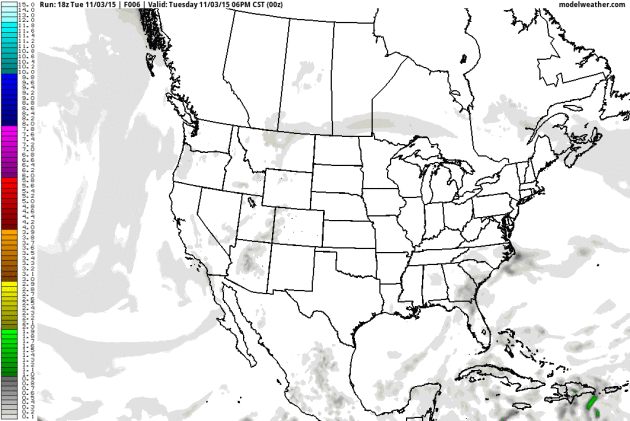
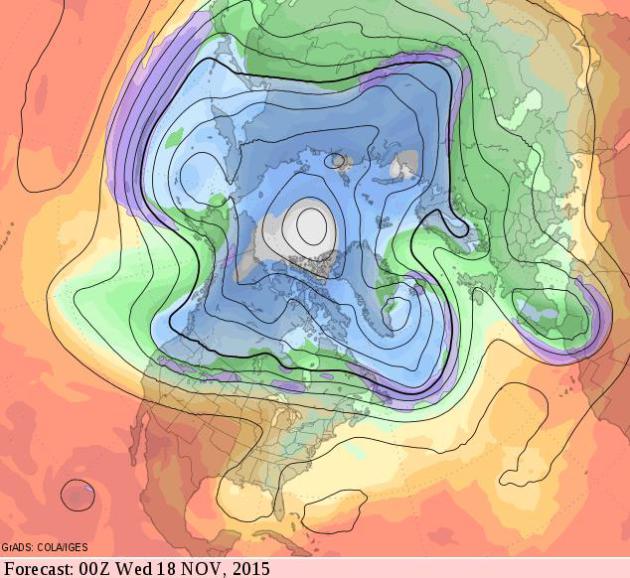
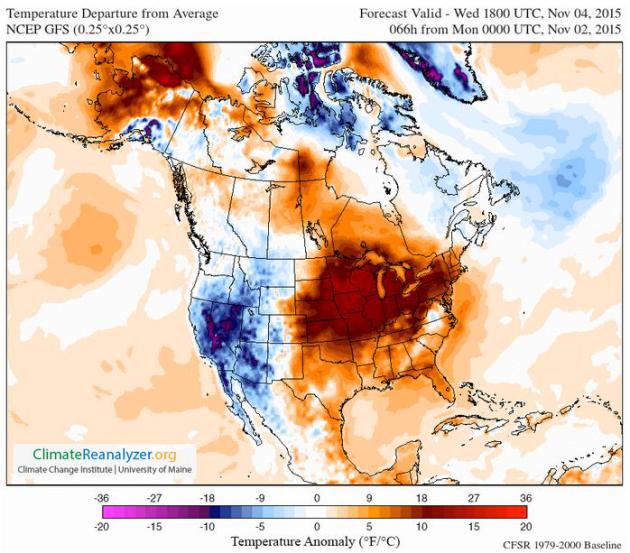
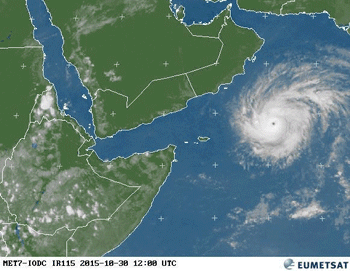
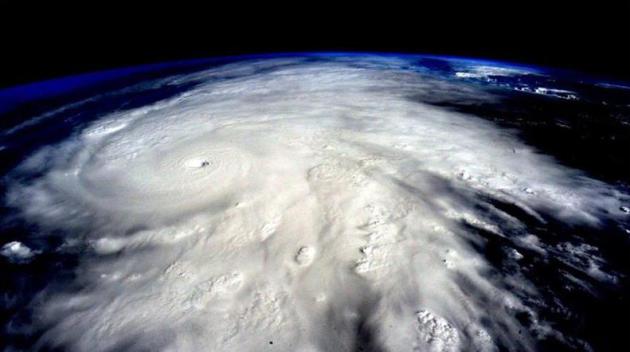
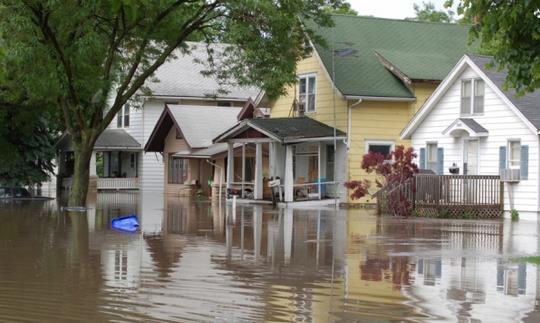
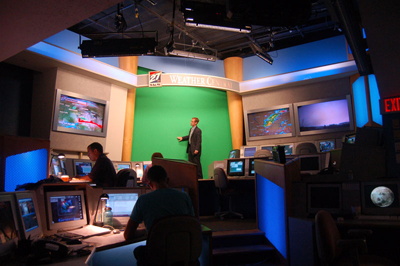
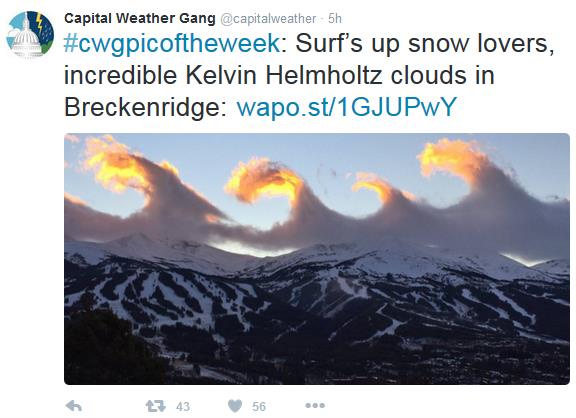

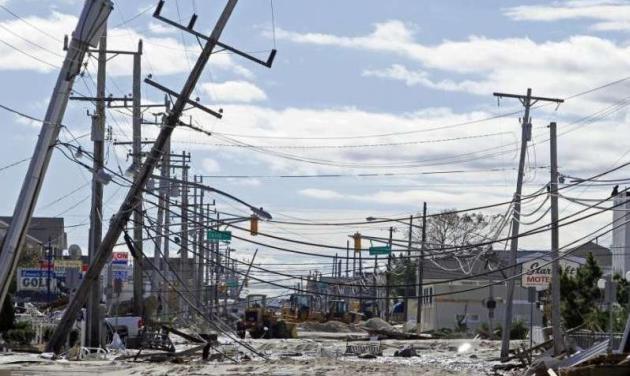
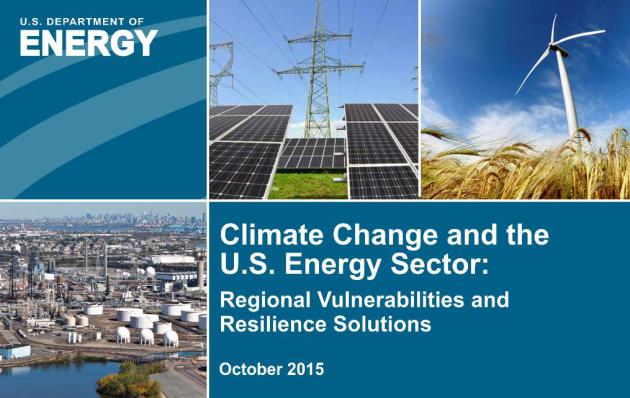
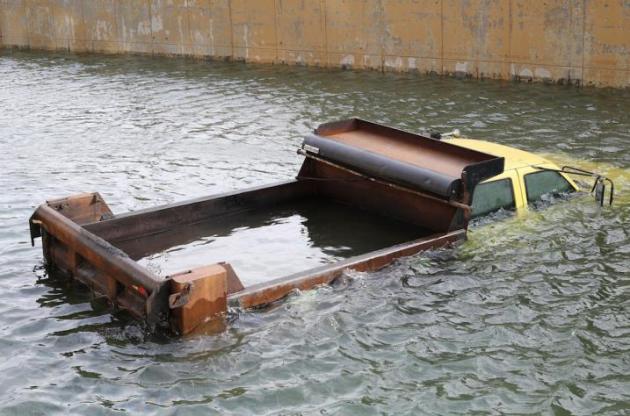
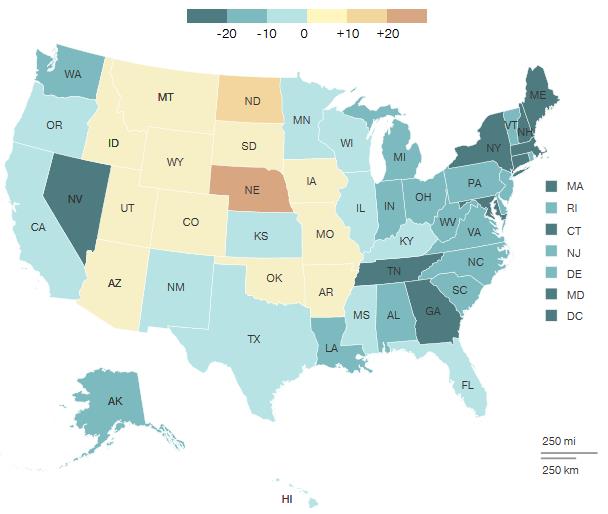
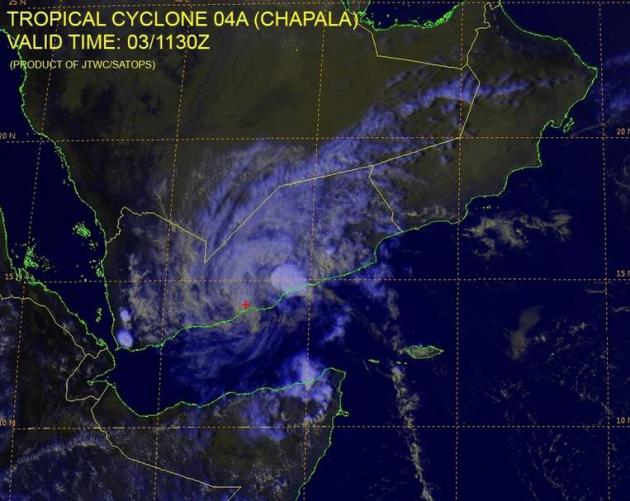

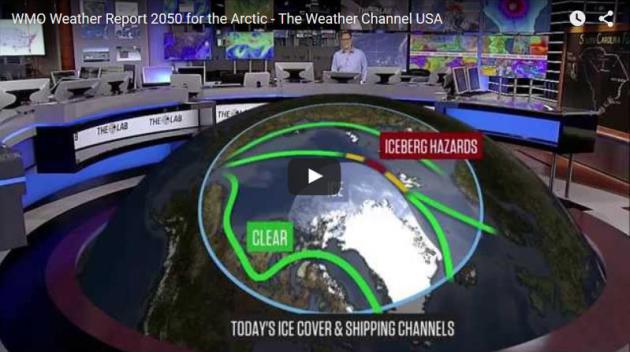



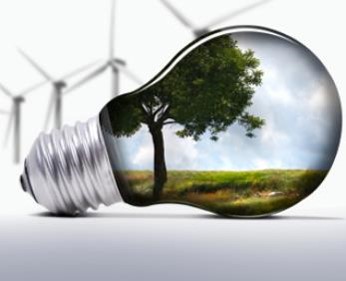


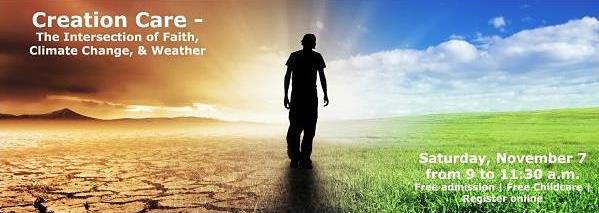
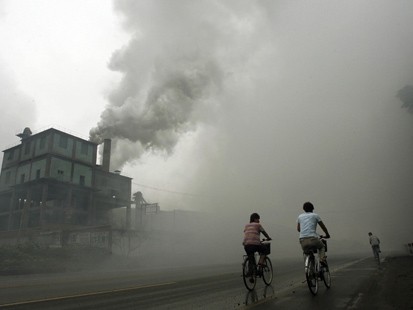
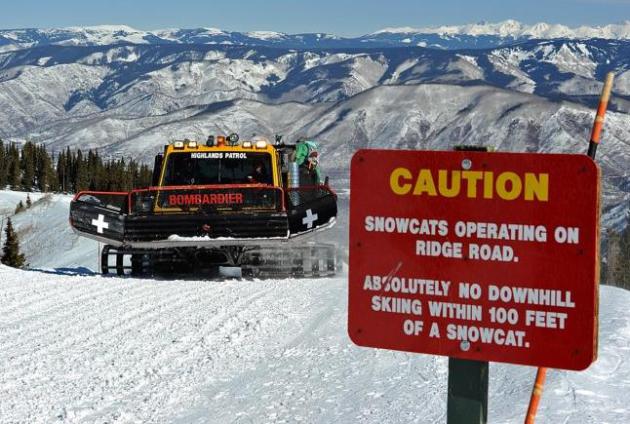

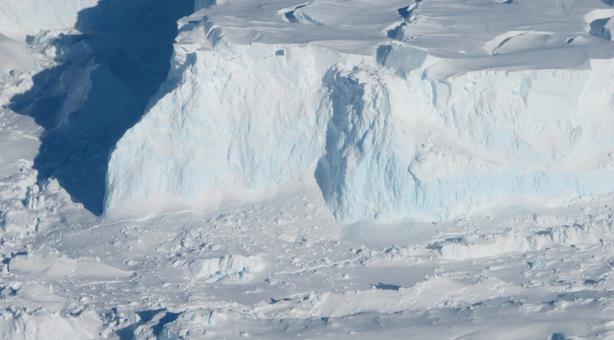
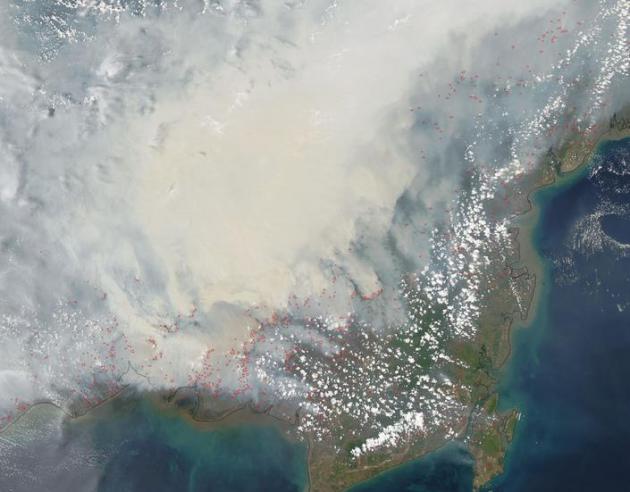
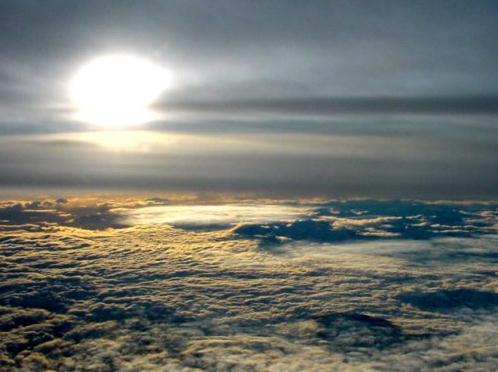
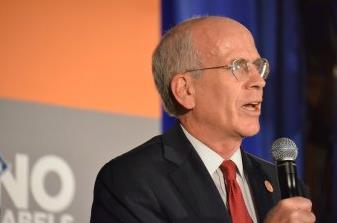
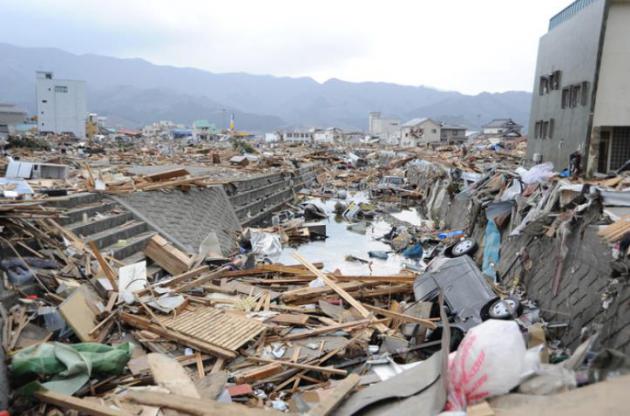

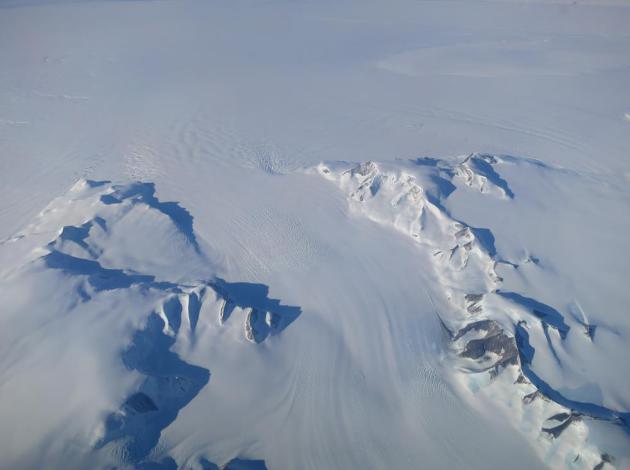
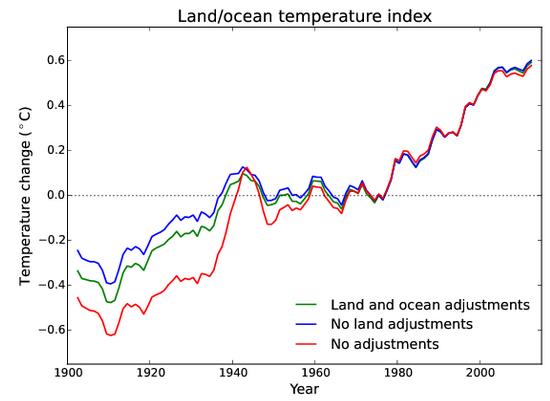

No comments:
Post a Comment